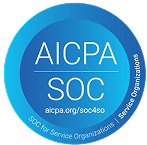FAQs
 What are no-cosigner loans?
What are no-cosigner loans?
No-cosigner loans are education loans that don’t require a guarantor. MPOWER Financing offers no-cosigner loans designed for Indian students who may not have access to traditional loan options. This can be particularly valuable for Indian students who may not have family or connections in North America who could serve as cosigners.
 Can I apply for multiple scholarships?
Can I apply for multiple scholarships?
Yes! Applying for multiple overseas master’s scholarships increases your chances of securing funding. Many successful Indian students combine several smaller scholarships to fund their education. Keep track of different application requirements and deadlines with a spreadsheet or similar tool.
 Where can I find an overseas master’s scholarship?
Where can I find an overseas master’s scholarship?
You can find scholarships for master’s degrees through university websites and online scholarship databases, including www.internationalscholarship.com, IEFA.com, eduPass.org. The USIEF (United States-India Educational Foundation) maintains offices in major Indian cities like Delhi, Mumbai, Chennai, Kolkata and Hyderabad and provides free advising services on scholarship opportunities for Indian students.
 How do I know if I’m eligible for a scholarship?
How do I know if I’m eligible for a scholarship?
Each scholarship has specific eligibility requirements, such as academic merit, financial need, nationality or field of study. Be sure to review each scholarship’s criteria carefully. For Indian students, additional requirements may include specific standardised test scores like GRE, GMAT or TOEFL, as well as authenticated academic transcripts from Indian institutions.
 What documents are required for scholarship applications?
What documents are required for scholarship applications?
Most scholarships require transcripts, a personal statement, recommendation letters and proof of financial need (for need-based scholarships). Indian students should prepare for additional documentation requirements such as degree equivalency certificates, financial affidavits, and passport verification. For many scholarships targeting Indian students, you may also need to provide proof of Indian citizenship or permanent residency.
 Are scholarships enough to cover all expenses?
Are scholarships enough to cover all expenses?
While some scholarships are fully funded, most only cover part of the costs. Students often combine scholarships with other funding sources such as personal savings, family contributions, loans, or part-time work. For Indian students, the significant currency conversion rate makes it especially important to secure multiple funding sources. A comprehensive financial plan might include scholarships, Indian government subsidies for education loans and university assistantships.
